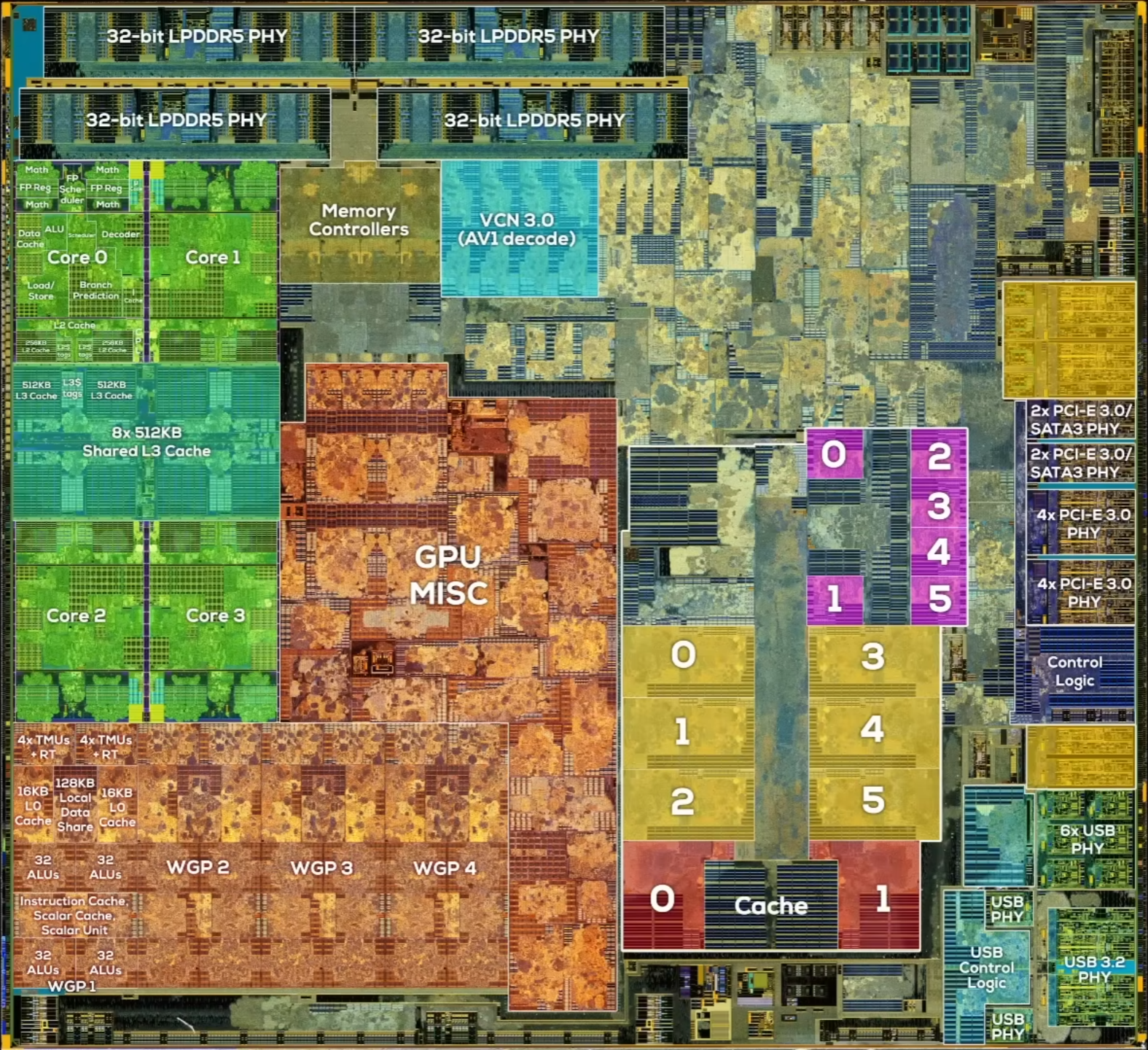
YouTuber High Yield and photographer Fritzchens Fritz have released an in-depth analysis of the 7nm Van Gogh APU found inside the original Steam Deck, featuring die shots with annotated components. The study revealed the layout of the Van Gogh APU and how significant each component is and cleared the air on some hardware that seemingly served no purpose for the Steam Deck.
Codenamed Aerith by Valve, Van Gogh is an APU designed by AMD and manufactured on TSMC's 7nm process. It contains four Zen 2 cores and eight RDNA 2 Compute Units (CUs), which is relatively underpowered compared to mainstream Ryzen APUs for laptops. Van Gogh isn't available for any company as a semi-custom design, hence its near-exclusive use in the Steam Deck.
The die-shot analysis confirmed these basic specs and revealed how significant each component inside the APU was. Van Gogh measures 162mm², with the LPDDR5 memory buses using about 9%, CPU cores taking up 12%, and the GPU cores consuming 11%. Of note, the GPU cores themselves only make up roughly half of the entire graphics processor. Miscellaneous GPU functions and components combined are approximately the same size as the eight RDNA 2 CUs.
Combined with the memory controller and other GPU-related components, these parts comprise only half of Van Gogh's total size. I/O components for USB ports and display capability are contained within the other half, but the die shots show many unaccounted areas remaining.

According to High Yield, 13% of the Van Gogh APU's space is dedicated to a component he initially couldn't identify but believes is the computer vision processing engine (CVPE) used inside the Magic Leap 2 AR headset. The Magic Leap 2 is confirmed to use AMD's Mero APU, which has four Zen 2 cores and eight RDNA 2 CUs like Van Gogh. Initially assumed to be a variant of Van Gogh, High Yield claims Van Gogh and Mero are the same chip used in both the Steam Deck and Magic Leap 2.
One vital piece of evidence for this claim is that the 6nm Sephiroth APU used in the Steam Deck OLED is much smaller than the 7nm Aerith chip. Although TSMC's 6nm has 18% denser logic transistors than 7nm, Sephiroth's 20% smaller size implies that something was removed to slim down the new APU.
High Yield further speculates that original Steam Decks may be able to utilize the CVPE hardware that currently goes unused. However, that depends on whether AMD manually disables the CVPE using a laser or if it's merely turned off by firmware. It's also not clear how well modders would be able to utilize the CVPE since it's used exclusively in Magic Leap hardware and software.







